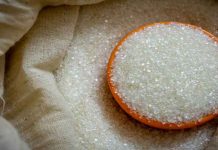ISLAMABAD: Rice is the second most important crop in Pakistan after wheat. However, its production is not optimal due to the use of time and labor-intensive manual cultivation methods. Hence, the country needs to switch to mechanization to get the desired production efficiency in a short period of time.
Talking to WealthPK, Senior Scientific Officer at the National Agricultural Research Council (NARC), Dr. Abid Majeed Satti said, “Pakistani rice is in great demand in the world and is one of the most important sources of foreign exchange earning, especially in the Middle Eastern countries. In addition to the Middle East, there is a market for Basmati rice in many other regions.”
According to the latest data of Pakistan Bureau of Statistics (PBS), in the first 10 months (July-April) of the current fiscal year 2021-22, Pakistan’s rice exports increased by 17.21% to $2.051 billion, up from $1.750 billion in the previous fiscal year.
Abid Majeed said, “To attain maximum rice production, we should use the latest technology. In this regard, our main focus is on rice mechanization which is the most important method and its main objective is to get high yields with the use of less labor.”
He added, “A minimum of 60 to 80 thousand plants should be produced per acre, but if cultivation is done manually, the plant population will not exceed 40 to 50 thousand per acre. It will take a lot of time and is labor intensive but in mechanical transplantation we can easily produce a plant population of 80 to 160 thousand.”
“The process of transplanting young rice seedlings can be done in one to two hours with the help of self-propelled transplanters. Last year, mechanical transplantation was carried out on a large scale throughout Punjab, including Gujranwala division, Sialkot, and Sheikhupura district,” Dr. Abid Majeed said.
He said Kabuta, a Japanese company, provides transplanters, harvesters and other agricultural equipment. When manual harvesting takes place, there are 10 to 15% losses; however, with the use of Kabuta equipment, the losses will be less, he added.
Dr. Abid Majeed further said, “Pakistani rice is famous globally for its quality and aroma and Pakistan is the third largest exporter of rice. China imports different varieties of rice from Pakistan. China itself is the largest producer of rice but at the same time it is also the largest rice importer because of the huge size of its population.’’
According to official sources in the first four months of the current year, Pakistan’s rice exports to China exceeded $225.52 million. China imported different varieties of rice. To fulfill its requirements, China multiplies its rice seeds in Pakistan and later on sows them on its own land.
“In order to maximize yield, the government is taking a lot of initiatives to help the farmers. Subsidies are given to help them increase crop production. In this regard last year, Prime Minister Agricultural Emergency program was launched whose main objective is to do research whereas the provincial governments objective is to give subsidies to the farmers on seeds, machinery, herbicides and pesticides,” said Dr. Abid Majeed.
Another initiative, he said, is that the government organizes Famers Field Day after some time in different rice growing areas where scientists educate the farmers about new production technologies. Dr. Abid Majeed Satti believed that with latest technology and proper farming methods Pakistan can achieve the desired results.






